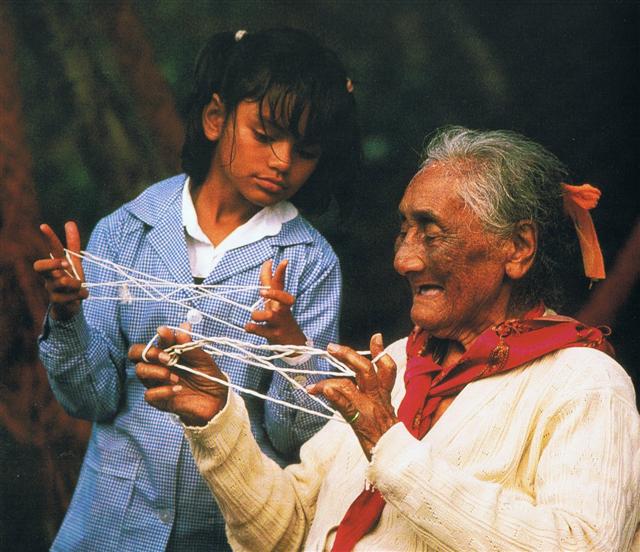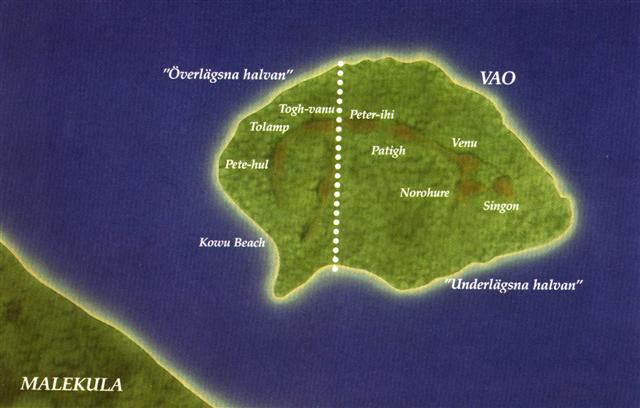1. We remember how they in New Zealand changed from their old 10-month year into a 12-month year: ... Whare-patari, who is credited with introducing the year of twelve months into New Zealand, had a staff with twelve notches on it. He went on a visit to some people called Rua-roa (Long pit) who were famous round about for their extensive knowledge. They inquired of Whare how many months the year had according to his reckoning. He showed them the staff with its twelve notches, one for each month. They replied: 'We are in error since we have but ten months. Are we wrong in lifting our crop of kumara (sweet potato) in the eighth month?' Whare-patari answered: 'You are wrong. Leave them until the tenth month. Know you not that there are two odd feathers in a bird's tail? Likewise there are two odd months in the year.' The 2 odd feathers in the tail of the Sun-bird certainly will come at the end of the solar year, cfr the name of the tribe, Rua-roa: ... The Maori used the same word for both solstices, marua-roa, 'long pit', and applied the term also to the month or season during which the Sun passed through its most northerly or southerly declination. A qualifying word such as takurua, 'winter', or o-rongo-nui, 'summer', was usually appended to denote which solstice was meant. When no explanatory word was added marua-roa seems to have signified the winter solstice ... I have argued for a solstice where the text flows on from side a to side b, and if Rehua is at Ga7-16 then it is possible the star could be a sign for the summer solstice ahead, 26 days later:
3 + 3 'black berries' hanging down from a string which emerges from the elbow (a cardinal point) of this tagata could indicate the last part of the side before the corner and mago the first part of the side after the corner. Similarly the last part of the previous season at Ana-muri is in a day of Saturn and what could be the first part of the next is in a Sunday. Open mouths probably refer to 'the opening' of new seasons. The distance from Ana-muri to Rehua is 186 - 5 = 181 days, one more than half 360 - which should be kept in mind when considering the meaning of those 6 hua poporo 'berries' in front of the long outstretched arm with an empty hand. The arm of Sun will change into a string of Moon, so to say. By the way, strings were used by the women when they taught the young generation the old songs and signs:
To work with threads, strings, and cloth should not be a task for men, they should rather incise signs in wood. The male season is pre-midsummer and the female post-midsummer. The strong Spring Sun is 'eating' (kai) - raising the water from the small puddles up into the sky by way of evaporation - and then it must be returned to the benefit of the young new generation, kaikai. My rule of thumb that double words mean the opposite of the single words evidently holds true. If there was a season on Easter Island which corresponded to pororo, palolo-mua, paroro etc, then it could well have been named poporo. Maori paroro means cloudy weather, and this ought to indicate Sun has turned around from his intensive spring 'sucking' to a returning of the water in autumn. The 'berries' beyond Ga7-15 are not black any more:
The islands all over the Pacific were imagined as 'black' in the east and 'white' in the west. Vao is an example:
The Swedish text says 'Överlägsna halvan' respectively 'Underlägsna halvan', which means 'The Superior Half' respectively 'The Inferior Half'. Apparently 'white' was regarded to have a higher value than 'black' and consequently was also west superior to east. The colour white is associated with Moon and black (uri) must then be the colour of Sun. But uri is not really black but the colour of the lush dark vegetation. To express the black corresponding to the absence of light uriuri would be more appropriate:
At the apex of Sun's climbing a drastic change is due. The midline of the year should be reflected in the text of G. If Sun (east) turns into Rain (west) somewhere in high summer, then a rainbow could be in place. This idea of mine is partly based on the fact that the Atan Manuscript has located coloured 'balls' (popo) in the nights before full moon in his Moon calendar. This information is given in Thor Heyerdal et al., Reports of the Norwegian Archaeological Expedition to Easter Island and the East Pacific, Vol. 2. I will here quote a full page from my outline of a glyph dictionary (although I at present will not endorse all of it):
In G the hua poporo signs come mainly before the tablet is turned. If 'coloured planetary balls' appear just before winter solstice, then it is not impossible that they also were associated with summer solstice, because of the 'antipodal' method for determining the 'house of Sun' by observing the face of Full Moon against the background of the stars in the night. Although I tend to think of a rainbow in connection with Sun breaking through the rain clouds, announcing the return of fine weather, I cannot see any reason for why rainbows should not appear in equal frequency when sunny weather is turning into a drizzle. Possibly the return of fine weather receives more attention. "... The Katawihi distinguish two rainbows: Mawali in the west, and Tini in the east. Tini and Mawali were twin brothers who brought about the flood that inundated the whole world and killed all living people, except two young girls whom they saved to be their companions. It is not advisable to look either of them straight in the eye: to look at Mawali is to become flabby, lazy, and unlucky at hunting and fishing; to look at Tini makes a man so clumsy that he cannot go any distance without stumbling and lacerating his feet against all obstacles in his path, or pick up a sharp instrument without cutting himself ... ... The Mura also believed that there were two rainbows, an 'upper' and a 'lower' ... Similarly, the Tucuna differentiated between the eastern and the western rainbows and believed them both to be subaquatic demons, the masters of fish and potter's clay respectively ... ... In South America the rainbow has a double meaning. On the one hand, as elsewhere, it announces the end of rain; on the other hand, it is considered to be responsible for diseases and various natural disasters [dis-aster]. In its first capacity the rainbow effects a disjunction between the sky and the earth which previously were joined through the medium of rain. In the second capacity it replaces the normal beneficient conjunction by an abnormal, maleficient one - the one it brings about itself between sky and earth by taking the place of water ..." (Claude Lévi-Strauss, The Raw and the Cooked. Introduction to a Science of Mythology: 1.) |
||||||||||||||||||||||||||||||||||||||||||||||||||||||||||||||||||||||||||||||||||||||||||||||||||||||||||||||||||||||||||||||||||||||||||||||||||||||||||















